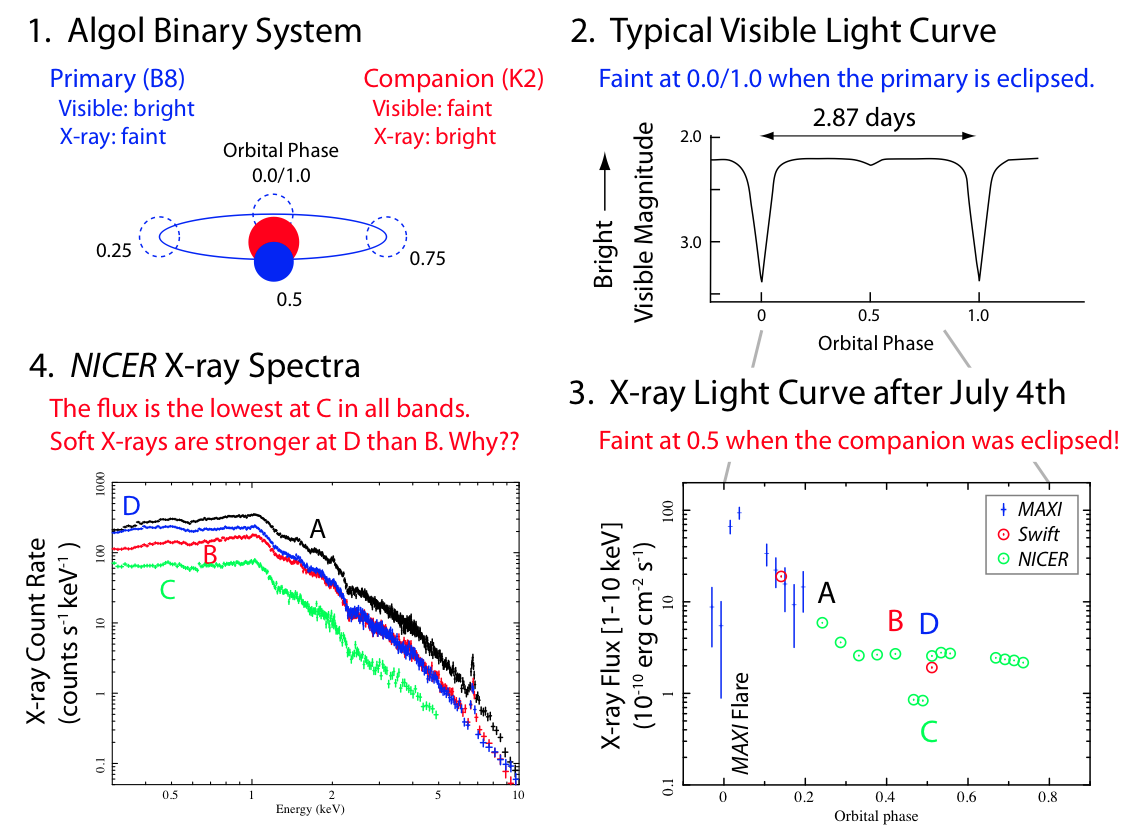NICER / ISS Science Nugget for July 12, 2018The Demon Star Winked in X-raysAlgol, the second-brightest star in the constellation Perseus, fascinated and frightened people in ancient times because it "winks." Every 2.87 days, this naked-eye star fades by one-third for several hours. For ancient peoples, who viewed the stars as fixed and constant, this variation must have been seen as a demon's omen. The truth is that Algol is not one star, but two, and these stars eclipse each other every 2.87 days – in fact, Algol was the first such eclipsing stellar system recognized. One of the two stars is a giant solar-mass star and the primary is a more massive but less evolved star – a paradox to astronomers that was the first indication that stars in binaries could exchange mass with each other. The lower-mass star shows signs of powerful magnetic activity, which can be observed efficiently in the X-ray band. The MAXI all sky X-ray monitor onboard the ISS detected the strongest X-ray flare from Algol in 8 years on July 4 2018, stellar fireworks for U.S. Independence Day. NICER responded quickly to MAXI's flare alert. Its observations began during the decay of this giant X-ray flare and later detected an abrupt decline in X-ray brightness by half, lasting several hours. NICER caught an X-ray wink! Its timing was consistent with a stellar eclipse, indicating that X-ray emission from the less massive star was occulted by the more massive star. This is the first detection of such an X-ray eclipse from Algol since 1997. Since we know the precise stellar sizes and orbits, we can estimate the size and location of the X-ray-emitting magnetic plasma loop above the stellar surface. NICER's large collecting area also provided a high-quality spectrum for each stellar orbital phase, which should help uncover in great detail how the X-ray plasma cools as it flows along the magnetic loop. NICER
|



